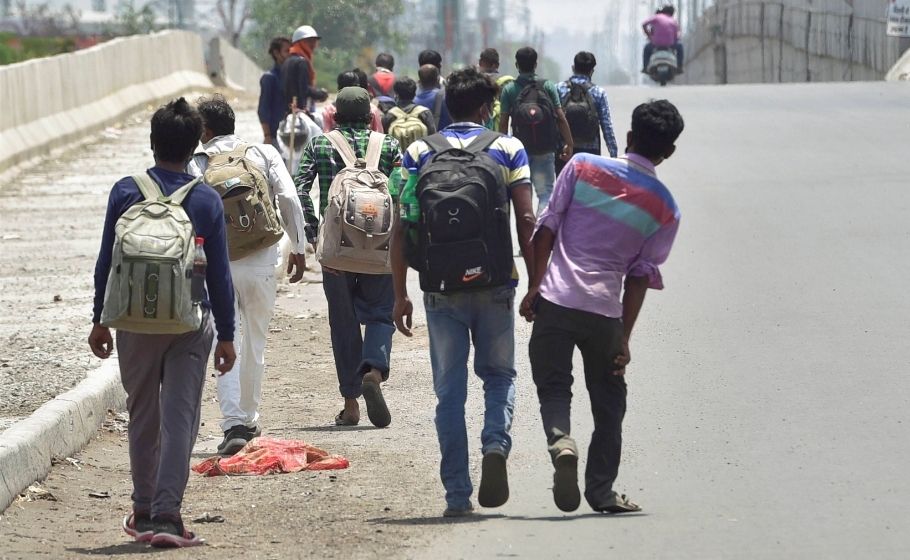
For Indian labour, May Day will never be the same again
8 and 8 and 8. This indicates the victory of workers, who achieved a healthy division of 24 hours of their life. They should not work for more than 8 hours, take rest for 8 hours and utilise the remaining 8 for education and entertainment

8 and 8 and 8. This indicates the victory of workers, who achieved a healthy division of 24 hours of their life. They should not work for more than 8 hours, take rest for 8 hours and utilise the remaining 8 for education and entertainment.
Workers all over the world struggled and sacrificed to gain the 8-hour-a-day work and its achievement is celebrated as May Day. The Eight Hours League campaigned for this 8-8-8 right. An 8-hour day monument was erected in Melbourne, Victoria in 1856 (see picture). For Indian workers, this May Day will perhaps be their last 8-hour day as the New Code of Labour Laws is waiting to be implemented, imposing 12-hour work days.
This May Day is not for labour, at least in India. Labour has nothing to celebrate on May 1, 2021, as deprivation of most of their rights by law is staring at them. While international workers celebrate May Day as a symbol of their victory, India now prescribes 12-hour days for workers.
Also read: Non-functioning government that completely failed its citizens in a pandemic
History reminds us that goons entered mass labour meetings as part of their plan tooth create pandemonium, leading to police attack on workers, causing several casualties. The then rulers falsely found 8 leaders responsible for ‘disorder’ and hanged them. This was followed by massive agitation to secure the 8-hour workday. This is being simply removed by Indian Parliament.
The new labour codes, approved by Parliament following opposition walkout in protest against the farm bills, were supposed to be implemented from April 1, but were deferred. As some sets or rules were not drafted completely and the states also did not finalise the rules, the codes could not come into operation on April 1, as scheduled earlier. The Union, being very busy with the second wave of COVID-19 and elections in several states, did not fix the next date for commencing the new labour laws.
In the draft rules issued by the labour ministry in November 2020, it notified that working hours can be extended up to 12 hours a day – higher than the 9 hours allowed under the Code on Occupational Safety, Health and Working Conditions. The weekly working hours limit has been fixed at 48 hours (six days X eight hours, with one weekly off). These contradictions left workers in confusion. When it was criticised, the government tried to describe it as misconception and unofficially told the media that it will be limiting the working hours to 8 hours a day, and any work beyond that will be considered as overtime, which entitles double pay.
Also read: Eight tribunals gone, right to cinematic expression loaded with fresh burden
These codes have little to do with labour welfare as they are apparently aimed at improving ease of doing business. They do not cover all categories of workers, as migrants, home-based workers and self-employed category of workers are not included. The codes give a fillip to engagement of contract labour by granting an all-India licence for five years to a contractor hiring such labour. They even allow for the employment of contract labour in core activities where “normally the work was being done through a contractor” or where “full-time workers were not required” or where there is a sudden increase in the volume of work needing more labour.
While the rules under the Code on Wages, 2019 have been finalised, those under the Occupational Safety, Health and Working Conditions Code, 2020, the Industrial Relations Code, 2020 and the Social Security Code, 2020 are yet to be notified. The officials told media that around 1,200 comments had been received on the draft rules under the occupational safety and social security codes.
Trade Union Boycott
On January 12, the labour minister claimed to have held discussions with trade unions and employers’ organisations regarding the occupational safety and social security rules. But ten central trade unions – the All-India Trade Union Congress, the Indian National Trade Union Congress, the Hind Mazdoor Sabha, the Centre of Indian Trade Unions, the All-India United Trade Union Centre, the Trade Union Coordination Committee, the Self Employed Women’s Association, the All-India Central Council of Trade Unions, the Labour Progressive Federation and the United Trade Union Congress — have boycotted the virtual meeting, terming it a “farce” in their joint statement on January 11.
Transparency Missing
While the Code on Wages was enacted in 2019, three more codes were enacted in September 2020 to replace 44 labour legislations with new provisions. Critics say transparency in the process is only an eyewash as hundreds of objections and oppositions to the dilution of hard-earned labour rights were dust-binned without explaining the reasons for rejection. There was no discussion in Parliament at all.
Transparency is a major casualty again. The joint statement of trade unions explained: “We have been critical of adoption of labour codes by flouting all parliamentary norms without discussion in absence of the entire opposition from the Parliament and without tripartite consultations. Instead of taking our objections seriously, the government is trying to create a farce of tripartite consultations by setting up this kind of video conference when we know that the physical meetings of the government at various levels are taking place, including the negotiations with the farmers as well as the election preparation rallies in various states etc.”

